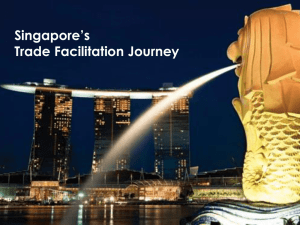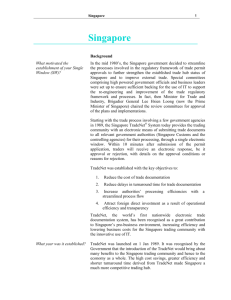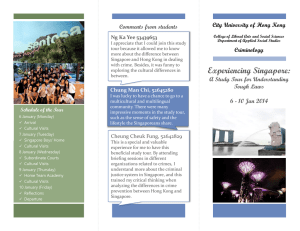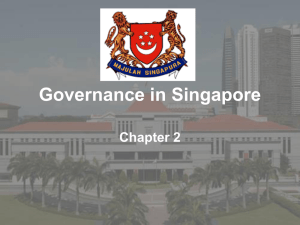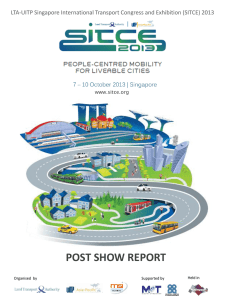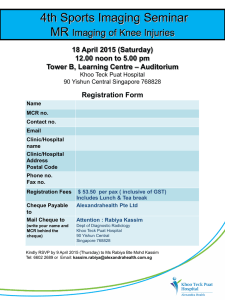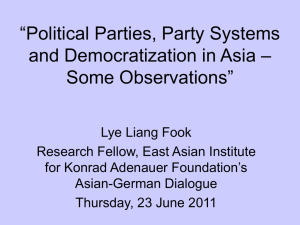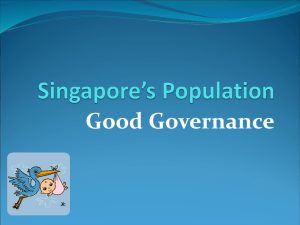Singapore Tradenet
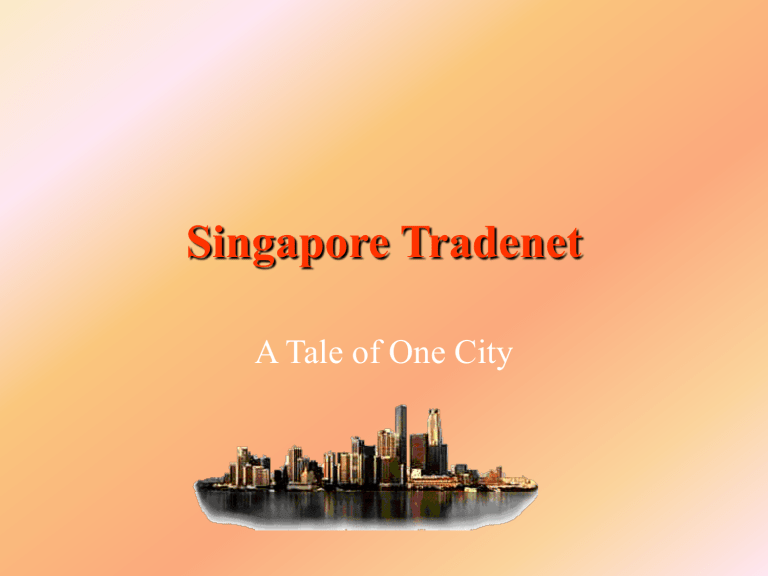
Singapore Tradenet
A Tale of One City
Suggested Study Questions
• 1. What was Lee Kuan Yew’s vision for Singapore?
What challenges did he face in achieving this vision?
• 2. Describe the trade documentation process before and after the implementation TradeNet. Who were the major stakeholders involved in the process redesign?
• 3. Evaluate the process used to implement TradeNet.
Would you consider the implementation “successful”
If so, what factors contributed to its success? If not, what factors contributed to its failure?
• 4. What effect will Tradenet have on countries inside and/or outside the Pacific Rim?
Dr. Chen, Singapore TradeNet TM -2
Why TradeNet case?
• The case presents the story behind the development of an industrywide information technology (IT) platform to facilitate trade documentation processing.
The (TradeNet) system is essential for
Singapore to maintain its position as a key port in the region.
Dr. Chen, Singapore TradeNet TM -3
Goals of the TradeNet Project
Redesign of the trade process to
The transformation of the country’s
The original goal
Strategy and infrastructure
EDI eventually led to the development of TradeNet
Dr. Chen, Singapore TradeNet TM -4
• TradeNet involves the partnership of a unique assortment of government agencies, bureaus, statutory boards, private agencies, and private companies involved in all aspects of the shipment of goods.
• The apparent success of the effort invites a review of the factors that contributed to the initiative and its implementations.
• The case provides an inter-organizational perspective to the theme of IT-enabled organizational changes and an example of
IT-enabled business process redesign.
Dr. Chen, Singapore TradeNet TM -5
Lee Kuan Yew’s Vision for Singapore
• Challenges and opportunities that Singapore faced from its birth as an independent city-state to 1989.
• Lee’s methods (leadership style) for moving the country forward (committed, involved)
• Paul Nutt’s four tactics of leadership styles
– edict, persuasion, participation, and active intervention
– most frequently used
– most successful
• How important of trade to Singapore’s success
(and why?)
Dr. Chen, Singapore TradeNet TM -6
TradeNet Implementation
Discuss the process by which the country transformed its trade process to increase its competitiveness.
• 1. Establishing direction and developing the infrastructure
– vision, infrastructure
– embark on initiatives to identify opportunities (RFI, RFP)
• 2. Clarifying the focus for change and establishing the transition organization
– no single organization could accomplish the trade process redesign independently (partnership)
– social infrastructure change
Dr. Chen, Singapore TradeNet TM -7
TradeNet Implementation (cont.)
– five critical success factors:
gain commitment of all interested parties
agreement to agree
each representative was an influential leader
redesign was a larger (interorganizational) BPR
personnel movement are easier and quick (job rotations)
• 3. Redesigning the trade process
– prototype: Trade Dial-Up (Merchants Air Cargo Inc.)
– existing process and new BPR
Dr. Chen, Singapore TradeNet
N
TM -8
TradeNet Implementation (cont.)
• 4. Technical design and implementation (levels of risk)
– project size
– project structure
– experience with the technology (outsouricng and technology transfer)
– any evidence of the benefits
• 5. An interesting approach to profit (liberal approach)
– extensive use of the statutory boards
– the government looked at capital and operations quite differently (effectiveness vs. efficiency)
Dr. Chen, Singapore TradeNet TM -9
Beyond TradeNet
• Impact of TradeNet on other countries:
– Inside the Pacific Rim
Taiwan
Japan
Hong Kong (TradeLink -- still in studying phase in 1991)
– Outside the Pacific Rim
Holland
Norway
U.S.A.
• The “second act”
– economic dynamism
– quality of life
– national identity
– global reach
Dr. Chen, Singapore TradeNet TM -10
Beyond TradeNet (cont.)
• TradeNet and SNS have become key building blocks of a bolder and more comprehensive vision for information infrastructure development in Singapore.
• EDI and value-added network services are seen as critical components for achieving the sophisticated infrastructure needed to support Singapore’s position as a global city.
Lessons for the Design of the
Information Age Organization
• Small size (state-county) vs. large size country
• Eastern vs. western organization
– collaborative and participative, yet top-down
• The organizational design challenge of the
1990s (TN-5)
Conclusions
• We have an opportunity to analyzing the characteristics of an information age organization and the role of IT in supporting it.
• Understand the issues of:
– interorganizational and global organization design
– information infrastructure
– the longitudinal implementation of comprehensive, systemic organization change
Vision
Mission,
Principles, and Values
Goals / Objectives
Strategies
Plans
Tactics
Figure: Hierarchy of Leadership Tools
Vision
Mission
Policies
Goals
Metrics Values
Time
Horizon
Objectives
Metrics Values
Time
Horizon
Strategies
Tactics
Figure Stages of Information-Systems Strategic Planning
Changes in the Management
Leadership
Technical skills
Behavior traits, flexibility
Concern for excellence,
Learning and self-confidence
Management
1.
Planning
2.
3.
Budgeting
Organizing
4.
5.
Staffing
Controlling
6.
Problem-solving
“Soft” Interpersonal Skills
1.
Effective communication
2.
3.
4.
5.
6.
7.
8.
Deep listening
Facilitating
Negotiating
Working with conflict
Relationship building
Understanding how to work effectively in teams
Knowing when to say “no”
Leadership
1.
Establishing direction
2.
3.
Aligning people
Motivating
4.
Inspiring
5.
Empowering
